HTC One max Review - It's Huge
by Brian Klug on October 28, 2013 10:00 AM EST- Posted in
- Smartphones
- HTC
- Mobile
- One
- Snapdragon 600
- Android 4.3
- One max
The One max joins a small but growing list of phones that include a fingerprint scanner for unlocking the device. I’ll leave the discussion about whether fingerprints are fundamentally usernames or passwords for another day, but fingerprint scanners seem to be in vogue right now for mobile phones. You could make the case that the perceived increase in security that comes with fingerprint scanners is both an enterprise or consumer play, again I’ll leave that philosophical discussion for another day. I remember the Motorola Atrix and its fingerprint scanner being a big deal a while ago, since then we’ve had the iPhone 5s dramatically reintroduce the fingerprint scanner and now the One max follow suit.
The One max fingerprint sensor is a swipe type, meaning there’s some kind of strip sensor inside that you swipe your finger across. Sliding your finger over this strip allows the module to scan a 2D region and extract features that are then used to identify a fingerprint. The One max hides this scanner inside a black square that’s slightly recessed on the back of the device, just beneath the camera. I’m reminded somewhat of the LG G2 and its rear-mounted power and volume buttons which also sit just beneath the rear-facing camera. Perhaps that’s a missed opportunity for LG, which could have also gone with a swipe type sensor in its power button. On the One max anyhow there’s no button, just the sensor. Although the fingerprint sensor is recessed slightly, it’s somewhat difficult to locate with just one’s index finger, something that results in inadvertent smudging of the rear-facing camera cover glass, something that didn’t happen as much with the G2 because there’s a larger lip and easily locatable bump.
The placement of the fingerprint sensor makes sense given that of the power button. As stated earlier for right handed users this means your index finger sits naturally near the sensor if your thumb is on the power button. Since the fingerprint button still requires activation to unlock the One max, you still need to press power to turn it on before you can swipe your finger and finally unlock it. I find myself wishing the fingerprint sensor was itself a button, something like the iPhone 5s, so unlocking could be as simple as pressing and swiping with the same finger. On the iPhone 5s the best activation pattern is pressing the home button and leaving the finger in contact with the button.
Setup requires you to set a passcode, after which a few training swipes trains the sensor for the finger you’ve chosen. Although the animation that plays shows the finger aligned along the long axis of the phone, for greater accuracy I trained the One max with my finger at the angle it would naturally be given my thumb on the power button. The only requirement given the swipe sensor is that the slide motion is straight down and not skewed.
The One max fingerprint sensor allows for up to 3 fingers to be paired, each able to either unlock or have the option of both unlocking and launching an application. I like the idea of fingerprints as shortcuts, something the iPhone 5s implementation lacks, but three fingers seems like a curiously low number given the ten digits humans have to work with. On the other hand, the placement of the button really limits you to middle and index fingers being viable options. In terms of functionality, although Apple doesn’t yet use fingerprints as shortcuts, Apple does use the fingerprint scanner to authenticate iTunes, iBooks, and App Store purchases, something HTC can’t quite do with the One max for Google Play purchases, at least until Google makes an API for it.
I initially trained the fingerprint sensor with my index finger being swiped straight down, and had some issues with unlocks requiring multiple swipes. Doing finger enrollment and training at an angle closer to how I actually swipe it naturally (at an angle) made the accuracy better, but the reality is that unlocking the One max still requires multiple tries more often than not. There isn’t much processing latency after a scan, but I had hoped the One max sensor would be tap and hold rather than swipe given its shape. I’m not clear what suppliers are involved for the sensor, but I’m told the One max also securely stores just the extracted features and not the fingerprint images (which is a no brainer). I haven’t delved much into the infrastructure used to secure the fingerprint features yet either. I’m also not sure whether the One max learns additional parts of the finger which wasn’t part of initial training the same way Apple’s does.
Although I don’t think anyone has totally nailed the fingerprint sensor yet on a device, the One max implementation definitely is further from perfection than Apple’s. Although it does work reasonably well, it still isn’t the transparent kind of convenience that I feel will compel users who ordinarily wouldn’t have to used a passcode to go and use the fingerprint scanner. I’ve continued using the fingerprint scanner on the One max, however.


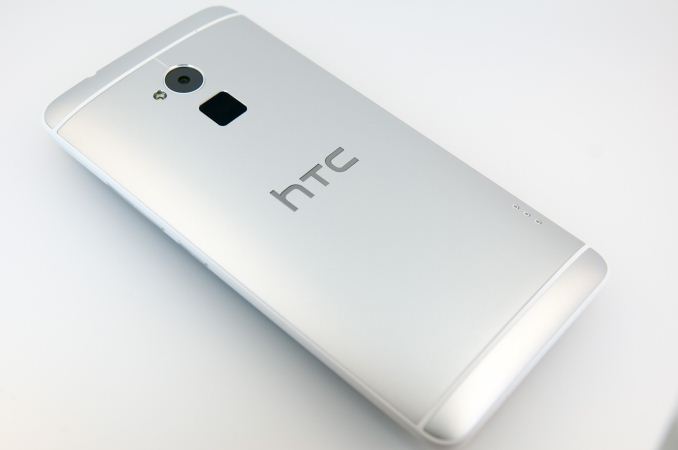
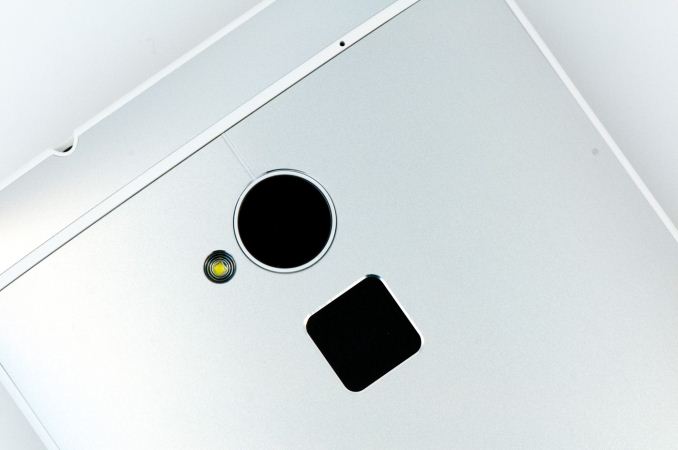
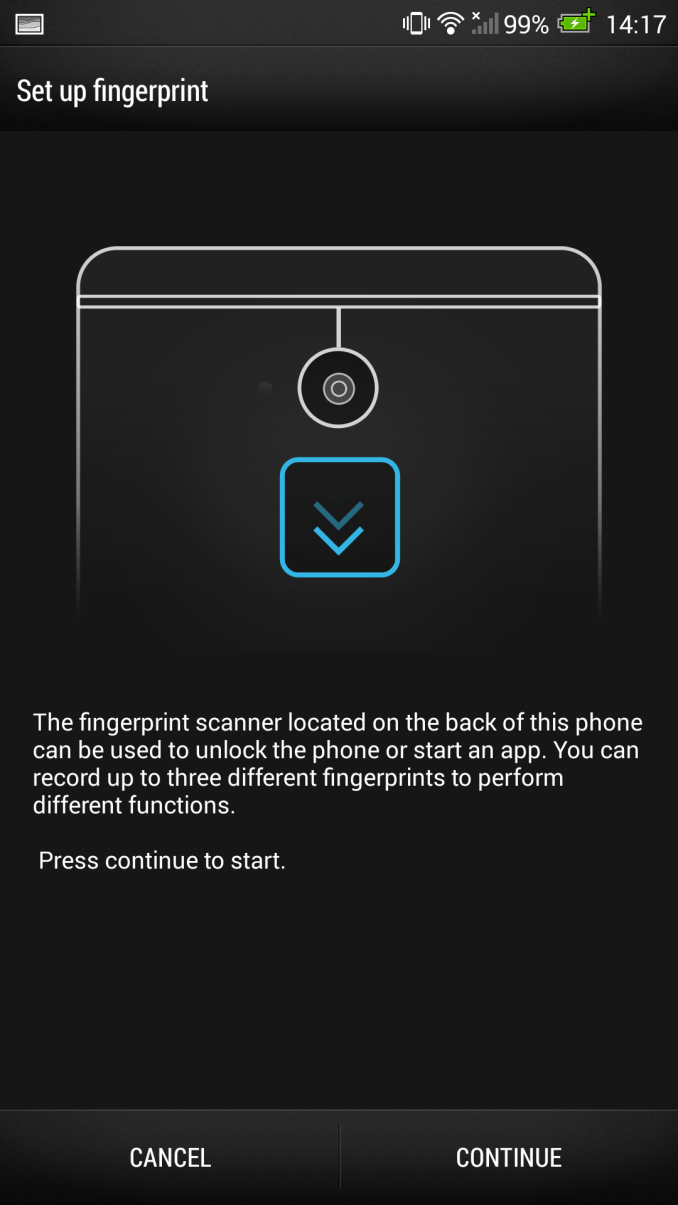
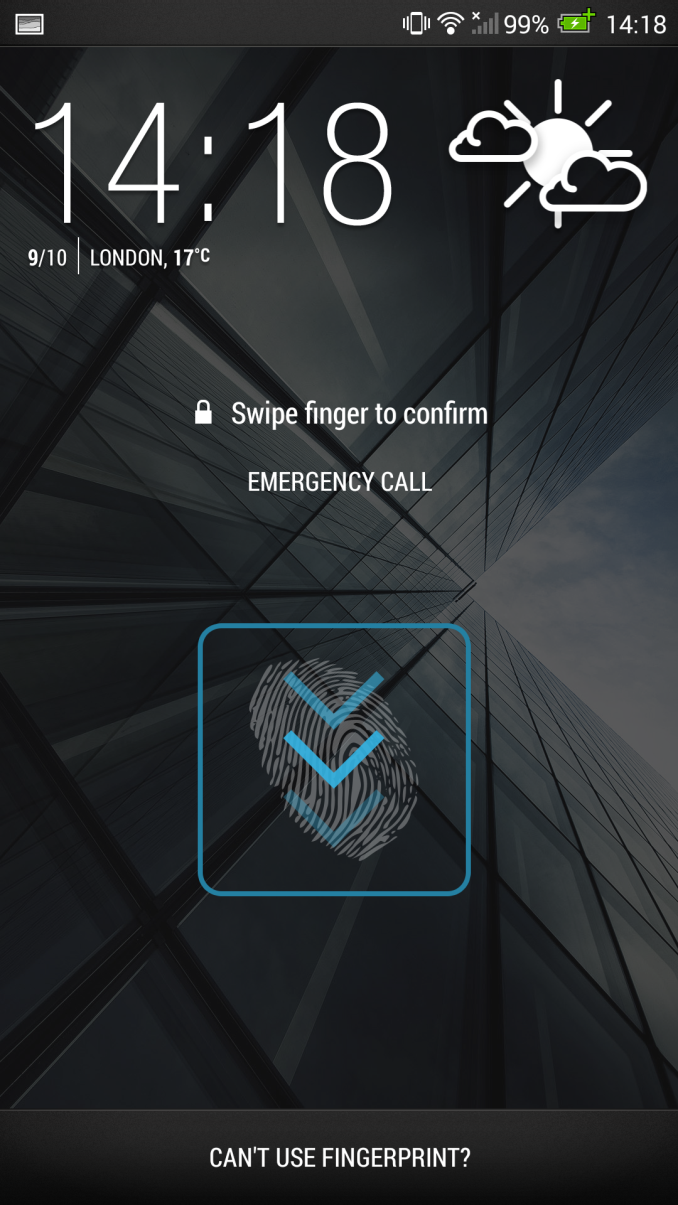

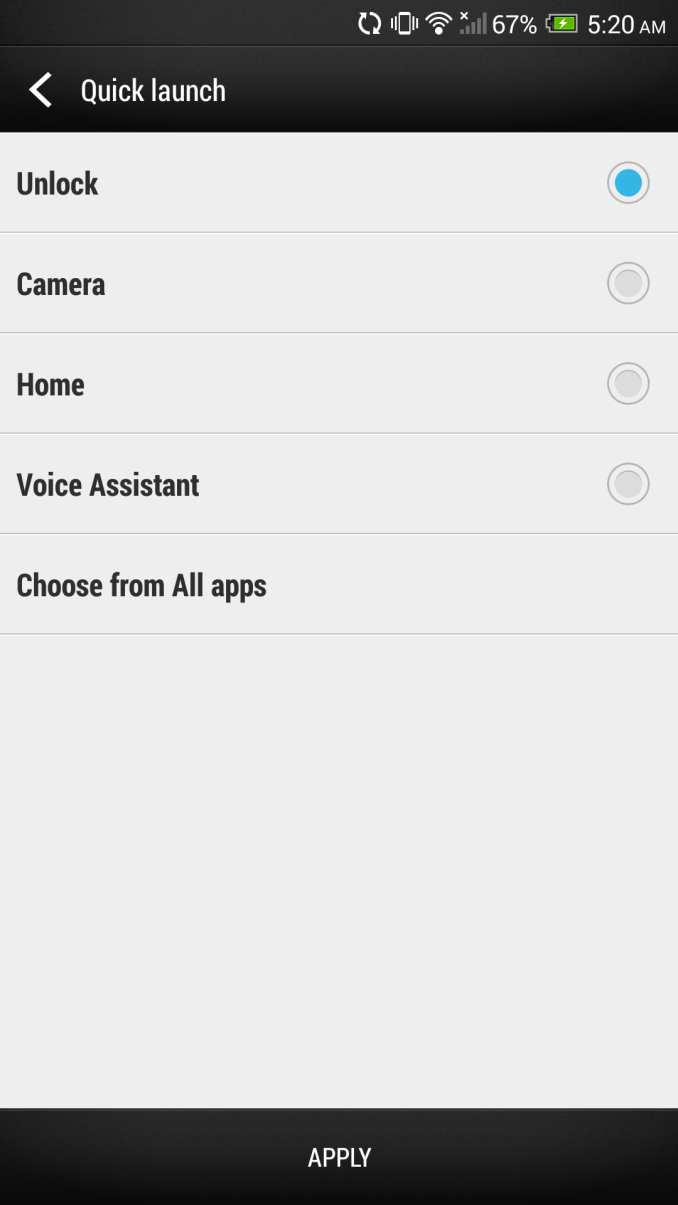








197 Comments
View All Comments
ddriver - Monday, October 28, 2013 - link
The note 3 is not really flat, the camera bulges a little bit, but yes, the overall shape of the back cover is flat. It is modular and replaceable though which does open a bit of customization option.kertisoka - Monday, October 28, 2013 - link
I don't think that the camera bulge is a plus though..ddriver - Monday, October 28, 2013 - link
A shame really, they could have put a much better sensor and optics in such a thick body...beginner99 - Monday, October 28, 2013 - link
Well the One and One Mini were already pretty oversized too in comparison to other models with the same screen size so nothing new (and IMHO bad). I like the design but the screen is too small or the chassis too big.FunBunny2 - Monday, October 28, 2013 - link
Ya want stereo speakers on the front? well, until they make speakers that play through the screen, physics will be physics.Omega215D - Tuesday, October 29, 2013 - link
The BoomSound speakers and the different shell thickness/ weight compared to the Samsung. Samsung uses thinner shells in order to achieve their svelt bodies and lighter weight. Also depends on the display technology used. LCDs are heavier than OLEDs.heron_kusanagi - Monday, October 28, 2013 - link
Hi Brian,Could you please do a Nokia Lumia 1020 review?
Drumsticks - Monday, October 28, 2013 - link
I'd also love to see a modern windows phone review. The 1520, personally. I mean, we got a Z10 review didn't we?If nothing else, id love to see a dive into Nokia's imaging on the 1020 and 1520, which is some engineering that I think everyone should be capable of appreciating, no matter how much you dislike the OS.
Alexvrb - Monday, October 28, 2013 - link
Yeah, I'd also like to see a proper 1520 review. I'm not surprised nobody at Anandtech got an invite to Nokia's event. Keep tossing their review phones in a closet (trash can?)... I'd quit sending you anything, if it was up to me. Waste of time and money.On the other hand, since he hates WP, it might just end up being a big ol' take a dump on the WP device article.
kyuu - Monday, October 28, 2013 - link
+1